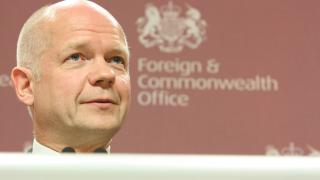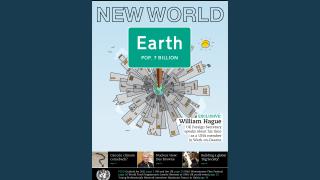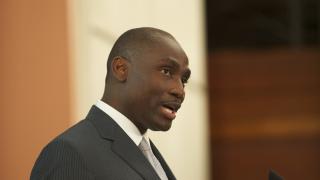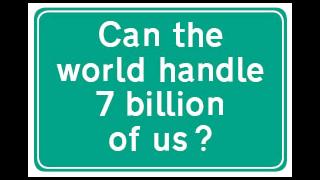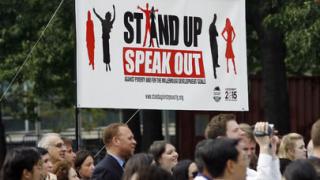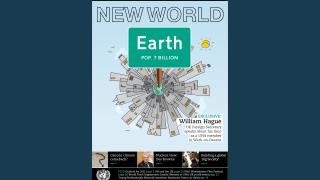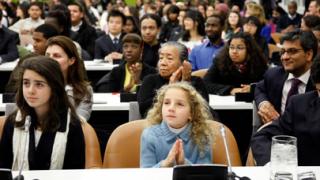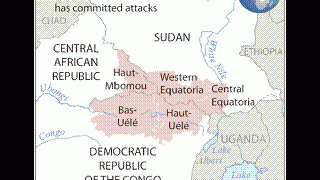
In our first ‘Talking Points’ feature, we outline ‘what we got’ and ‘what we didn’t get’ from Cancún.
The 16th meeting of the parties to the UN Framework Convention on Climate Change (UNFCCC) in Cancún concluded on 10 December 2010 with sighs of relief. Deft political manoeuvring and drafting had produced a raft of agreements – including on deforestation, finance and monitoring emissions-reduction pledges – endorsed by near consensus. Of the 194 states present, only Bolivia was not in favour of the outcome.
Following the fractious debate at the 2009 conference in Copenhagen, expectations for Cancún had been low, with many seemingly more focussed on restoring faith in the negotiating process than on the future of the existing global climate framework, the Kyoto Protocol, which expires next year.
Under Kyoto, 37 industrialised nations (with the notable exception of the US) took on binding emissions-reduction targets over the period 2008-12, amounting to an average of five per cent against 1990 levels. Developing countries were not set any targets. Instead, Kyoto recognised ‘common but differentiated responsibilities’ stemming from industrialised nations’ overwhelming historical responsibility for carbon dioxide (CO2) in the atmosphere. More than a decade since Kyoto’s adoption, this principle remains central to many developing nations, including India and China, which recently pipped the US to become the world’s largest emitter.
In Cancún, both countries shifted their positions in a welcome manner. For the first time, India announced that it would consider taking on emissions cuts under an international mandate. India is the world’s third largest emitter and though it lags far behind the US and China (it produces about five per cent of global CO2, compared to China’s 23 per cent and America’s 22 per cent), its demand for energy is rising rapidly.
China meanwhile agreed to some independent monitoring of its efforts to reduce emissions. Both nations made non-binding commitments under the Copenhagen Accord, which for all its touted failures, saw the US pledge a 17 per cent reduction on 2005 levels by 2020, and India and China pledge 20-25 per cent and 40-45 per cent respectively.
The role of conference president Patricia Espinosa, Mexico’s Foreign Minister, in securing these commitments was widely praised. In order to avoid the accusations of ‘closed-door conspiring’ by rich nations which irrevocably damaged the Copenhagen conference, Espinosa asked five pairs of ministers – each consisting of a developing and a rich country representative – to explore compromises in particularly contentious areas.
British Climate Secretary Chris Huhne was paired with Brazil’s environment minister, Izabella Teixeira. They were asked to bridge the
‘Kyoto gap’ between those countries that insist they will never sign up to a new period of Kyoto targets (such as Japan, Russia and Canada) and those who claim that without a Kyoto extension, there can be no new climate deal (Bolivia, Venezuela, China and several African countries).
In the end, the ‘Kyoto gap’ was not bridged at Cancún. Instead, a cleverly-worded insertion into the text enabled Japan et al to adopt it without committing themselves. These sleights of hand, however, have meant that campaigners’ reactions to Cancún have been much more muted than politicians’, many of whom ended the conference with standing ovations.
While the Cancún Agreements, if honoured, will undoubtedly make a tangible difference, much has been left for this year’s meeting in Durban, including the biggest issue of all: a post-2012 global climate framework. Bolivia reaped considerable antagonism for its refusal to endorse the outcome. But the UN itself has warned that the actions taken at Cancún fall far short of what is needed to limit global temperature rise to two degrees – the threshold endorsed by the conference. While delegates agreed to seek ‘deep cuts’, they reiterated the voluntary pledges made in 2009, deferring decisions on binding cuts.
Cancún demonstrated that the UN negotiating process and, for that matter, multilateralism as a whole, is not the obstacle to progress. When countries have the political will, they are able to strike agreements, regardless of how difficult the negotiations may be or in what forum they take place. Whether they can muster enough in time for Durban remains to be seen.
Cancún has done its job ... Governments have given a clear signal that they are headed towards a low-emissions future
together" - Christina Figueres, UNFCCC Executive Secretary
What we got
A set of fully legitimate international agreements. Unlike the Copenhagen Accord, which was merely ‘noted’ by the UNFCCC membership, the Cancún Agreements were formally adopted and integrate the Copenhagen pledges into the UNFCCC system, though the pledges are still not binding.
Advances in reporting and verification. Rich countries must report annually on their targets while developing countries should publish biennial progress reports on their pledges. Countries that receive international support for mitigation will be subject to international verification. (Those that fund their own mitigation will not.)
Consensus on keeping global temperature rise under 2°C and a suggestion that the international community should consider lowering this to 1.5°C based on the latest scientific data.
A stated goal of reducing rich country emissions by 25-40 per cent from 1990 levels, and agreement that there should be no gap between the current binding commitments phase and the next.
$100 billion a year in new climate aid for poor countries, almost doubling aid flows globally. $30 billion of this is fast-start financing to be delivered between 2010 and 2012
A new mechanism to oversee aid transfers with guidance on supporting both mitigation and adaptation. The Green Climate Fund will initially be administered by the World Bank, moving to long-term arrangements after a three-year probationary period. This eventual move was crucial to many developing countries that feel marginalised by the Bank.
A framework to reduce deforestation. Cancún provided guidelines for developing countries to implement REDD+ (Reducing Emissions from Deforestation and forest Degradation) – provisions aimed at reducing emissions from forest clearing and other land use changes, which currently make up about one fifth of global emissions.
An expanded Clean Development Mechanism (CDM). CDM currently allows projects in developing countries to receive carbon credits for reducing emissions below a business-as-usual baseline, mostly through renewable energy, energy efficiency and industrial processes. The Cancún Agreements expand eligible projects to include carbon capture and storage.
The establishment of a new technology mechanism to facilitate knowledge sharing and the development of new clean technologies, particularly in developing countries.
An Adaptation Committee to help countries assess risks and create national adaptation strategies. The Cancún Agreements also start a process to investigate the possibility of an international climate risk insurance facility.
We are talking about a [combined] reduction in emissions of 13-16%, and what this means is an increase of more than 4 degrees ... a situation that my president has termed ecocide and genocide" - Pablo Solón, Bolivian ambassador to the UN
What we didn't get
Progress towards a binding, global climate framework. Cancún saw a continuation of the move away from international commitments towards domestic or regional commitments.
No country increased its Copenhagen targets. The European Union, which had previously indicated it might raise its target to 30 per cent, did not do so.#
Without the prospect of new emissions caps, carbon markets could struggle.
Current commitments are projected to reduce CO2 by just 16 per cent on 1990 levels according to a recent UN Environment Programme report, instead of the 25-40 per cent envisaged by the Cancún Agreements.
Global temperatures, meanwhile, are expected to rise by 4°C this century.
The headline-grabbing $100 billion pledge was made at Copenhagen in 2009 and finances have been slow to emerge.
Decisions on a second phase of binding emissions cuts were deferred, with several key countries, including Japan and Russia, announcing they were not willing to take on a new set of targets.
Verification will be limited to those schemes financed by international funds.
The modalities of verification – whether it will be carried out by the UN, a group of countries or another body – have not been specified.
The REDD+ guidance is a framework only. It does not obligate developing countries to implement such initiatives or rich countries to assist them.
There is also uncertainty over whether funds can come from corporations buying carbon offsets, and whether forest credits will be accepted as off- sets instead of domestic cuts.
The pledges by the US and India made at Copenhagen and reiterated in Cancún will likely encounter opposition when put before their national legislature.
Natalie Samarasinghe is the editor of New World and Head of Policy & Communications at the UN Association of the UK

